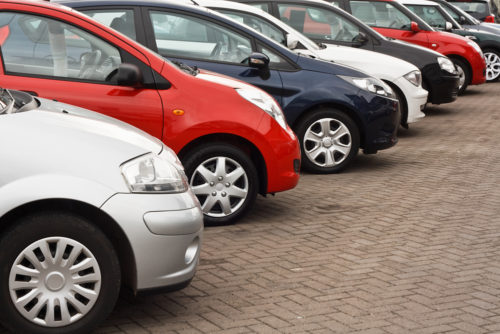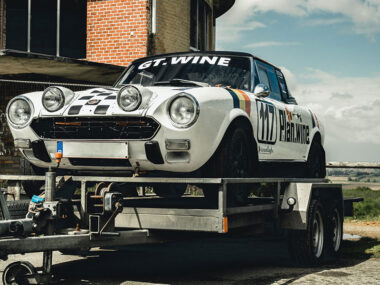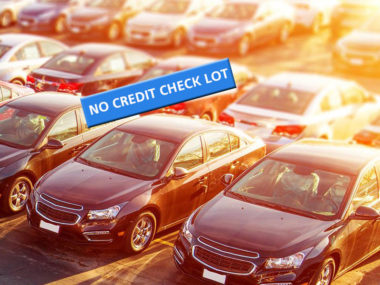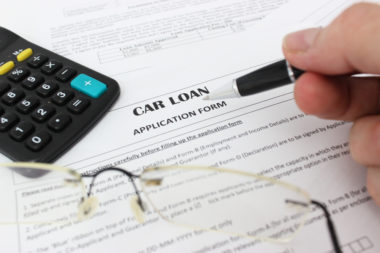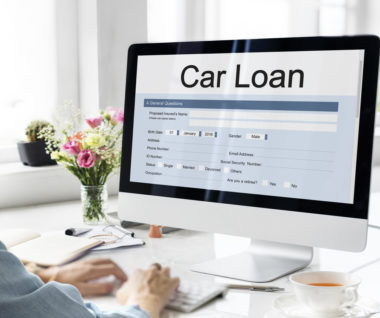You’re looking to buy a car in good condition, but you aren’t interested in buying a brand new car off of the lot. You know that there are plenty of great used cars out there that have low miles, tons of features, and are quite stylish. However, maybe you’re not quite sure where to start or what kinds of questions to ask in order to get the best deal. Here’s what you need to know in order to feel prepared and confident when picking out a used car from the dealership.
Table of Contents
Set a Budget and Define Your Needs
Before you decide on a car or even start seriously shopping for one, it’s very important to sit down and create a budget plan. First, take a look at your needs. Ask yourself what you require out of a new car and narrow down the features that are most important to you. After you have that written down, you can begin a focused search for a car with these specifics in mind.
Do some research online within those parameters just to get an idea of the types of cars you might be most interested in. You can see what price dealers are asking, and what cars align with your budget.
Remember to not get swept away by fancy-looking cars you see during your research. This preliminary budgeting step is important before you go shopping because you’ll have already made up your mind about what you need. You won’t be swayed by newer models that don’t necessarily seem practical for you (or for your budget right now).
It’s okay to purchase a stylish car that has a few extras if you want to, but you should make sure that your car is practical for your needs, first and foremost. Not to mention, you shouldn’t let looks and extras push you to pay more than you want.
Remember, this first step is just about doing some research to set a clear budget for yourself. In addition, you’re deciding what features are most important to you. You don’t want your time to be wasted on cars that you’re not interested in once you get down to the dealership. Make some clear decisions right now so that you feel confident stepping onto the car lot with a plan.
What to Look for When Buying a Used Car
You might have an idea of what type of car you want at this point, but it can be overwhelming to dive into a pool of used cars for sale. It might be helpful to make a checklist of things that you need to look out for, just so you don’t forget once you start doing some shopping. Of course, the first thing you should remember is to keep your budget in mind. Next, remember features you selected and why you need them. Then, move on to researching a specific car.
Do some research about a model of car that you think you might want. You should be able to find reviews and reliability ratings all over the internet about any make and model that you might be interested in. You should take this into consideration before you start shopping. You have to know if the car you’re picking is going to cost you more than you can afford in upkeep and if it is prone to early breakdown, period.
Most dealership experiences include a salesperson who accompanies you, and answers any questions. In order to avoid wasting your time seeing cars that aren’t a good fit for you, come prepared with a list of must haves to help point the salesperson in the right direction. This can help the salesperson choose the right car for you, rather than sell you a car that seems like a good deal.
How Many Miles Should a Car Have When Buying Used?
Next, you have to know how many miles are on your car, given what year it is. Older models will usually have more miles on them, naturally, but you should also know how many are too many on a newer model. Think of it this way: the yearly average mileage to put on a car is about 10,000 to 12,000. So, if a car is about three years old and has 30,000 miles on it, you’re in a pretty good spot.
There is no set amount that is considered too much, but there are cars that are known for lasting longer than others, and cars that are notorious for kicking the bucket around a certain mileage. Try to watch out for cars that were used for long distance travel often.
Sometimes rental cars will be retired and sold by dealerships after they’ve accumulated a significant amount of miles. While these aren’t necessarily a bad choice, it just means that your car’s lifespan may have been shortened.
If you’re leasing a car and expecting that you won’t have to do any significant repairs until after 100,000 miles (which is pretty common) you might not have a ton of mileage left before you hit this milestone. However, their asking price will likely be much lower than competitors simply due to the high mileage aspect.
As for newer models that have had standard previous owners, you should be looking at quite low mileage. If it’s just a couple years old, you’re likely looking at 20,000 or 30,000 miles if it was driven a fair amount. Some individuals just use their cars to get to and from work and in that instance, you’re likely looking at even less mileage in total.
If you’re buying something 10 years old, you can pretty much expect that there will be at least 100,000 miles on it. Again, you might want to keep maintenance costs in mind as well as the potential for breakdown. Some cars just require more maintenance and checkups than others in general. However, once you go over that 100,000 mile mark, you’re opening yourself up to the potential of larger, more serious repairs needed to be done, or possible breakdowns.
Research Your Preferred Cars
At this point you probably have a pretty firm idea of exactly what models of cars you’re interested in. Now is the time to start doing some much more in-depth research than you did before. Take all the information that you know about a specific car including mileage, year, and basic condition and start asking around for pricing.
Your goal should be to find a price that reflects a car’s depreciation fairly and accurately. A common way to do this is to check something like Kelley Blue Book, which breaks down suggested pricing for you based on a standard set of criteria. You may be able to find some other trusted resources around the web that can help you determine a fair asking price for the cars you like best.
You’ve also seen what others are asking for their car of the same model, so you can add that into your research and get an average range that seems reasonable given the car’s condition. You can now compare this to your budget and see if it all lines up. However, you’re probably almost at the point where you have to see something in person to really know if it’s worth it. You won’t be able to truly gauge the condition and the worth of the car until you know its history and what it looks like face to face.
Check the Vehicle History Report
The dealer listing a car should be willing to disclose information about previous owners to you. Since you’re looking for a used car, your car will have had at least one previous owner. This means, if the car was ever repaired because something wasn’t working correctly, the dealer should tell you about it. What’s more, if the car was ever in an accident and was issued replacement parts, you should know about that too, so don’t be afraid to ask.
However, sometimes a dealer might not be entirely forthcoming or they might just legitimately not know the history. If they aren’t willing to tell you, there are ways you can find out for yourself.
It’s not a bad idea to check for yourself regardless of the situation. You can use services like Carfax or Autocheck. These sites will probably be able to give you detailed information about any previous repairs or car accidents, which is undoubtedly valuable information to have.
In many cases, the dealer will be upfront about this information and will provide you with a free Carfax or Autocheck report in order to ease your mind. In this case, you might not need to check for yourself, but it’s entirely up to you. Just know that doing these checks yourself often costs money. It’s completely worth it if your dealer has no — or very little — information about the car. You definitely don’t want any problems sneaking up on you.
Test Drive and Have the Car Inspected
Once you get to the dealership, you’re ready to test drive. It’s not a bad idea to inspect all of the features on the car and test them out to make sure they work. Of course, your main purpose here will be to test drive the car and make sure it feels like a fit for you.
Make sure you’re comfortable driving it and the car drives smoothly. The engine should sound like it’s not working too hard to get going and there shouldn’t be any strange noises or leaks. Trust your instincts and be as thorough as possible with your own inspection of each area of the car.
It’s a smart idea to go ahead and get the car inspected professionally. Check in your area to see if there are specialist shops that offer this service. It’s a fairly quick and inexpensive process that will let you know for sure that you’re buying a quality product.
An inspector will let you know in-depth information about how the engine is running, if parts need replacing soon, how the tires look, and much more. It’s a practical idea that costs a small amount upfront, but could save you a lot of headaches later. There are mobile techs that will drive out to the dealership or the private seller’s location — take advantage of these. Although this is an avoidable cost, it could save you tons in the long run.
Negotiate the Price
Most dealers ask for a high price because they know there will be some negotiation involved — they also need to make a profit. Chances are, once you did your research, you were able to see that the dealerships always seem to land on the higher end of the average price spectrum.
Dealership cars are not necessarily better than other used cars. Mileage, shape, and many other factors go into determining the price. Dealerships do a wonderful job of cleaning the car, polishing it up, and making it look as new as possible. However, it’s still a used car, and when it comes down to it, you should get it at a fair price.
Do your best to negotiate the price. Price estimators such as Kelly Blue Book and NADA can help you understand what the car you are interested in is truly worth. Making a car clean and presentable is not a reason to charge hundreds more, so make sure that you know how much this car is worth and use that knowledge to your advantage.
Give the dealer a reasonable offer that shows you know the car’s worth and that you’ve done the appropriate research, and you’re going to get a positive response. Be sure to look out for excessive closing costs that were not mentioned originally, as well as documentation fees. These are sometimes unavoidable, but they can often be negotiated. Prep fees are also something to be aware of. The car should be sold in good condition so it is important to make sure that you are not paying for repairs to the car in your prep fee.
Now that you’re armed with this knowledge, you know exactly what you need in order to successfully purchase the used car of your dreams from a dealership. You should feel confident in the budget that you’ve laid out, you know how to price-check used cars online, and what to ask the dealer once you get there. You know what mileage to look for and how to negotiate and get a good price. That said, have fun test driving cars and make sure you don’t choose anything that doesn’t truly feel like a great fit for you.
Image Source: https://depositphotos.com/
